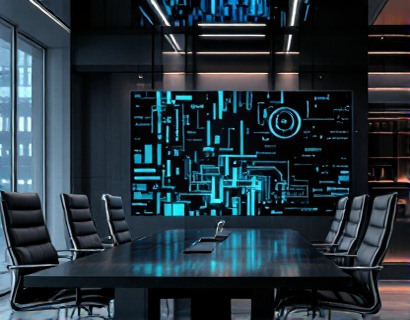Optimizing Architecture Business Management with Cutting-Edge Software Solutions
In the rapidly evolving landscape of architecture, firms are under constant pressure to deliver high-quality projects while managing complex business operations. The integration of advanced software solutions has emerged as a pivotal strategy for architecture firms to stay competitive and efficient. This article explores how cutting-edge platforms can transform business management in the architecture sector, focusing on project management, resource utilization, and client engagement. By leveraging these technologies, architects can concentrate on their core creative tasks, while business operations run smoothly in the background.
Enhancing Project Management
Project management is the backbone of any architecture firm. Traditional methods often involve manual tracking of tasks, deadlines, and budgets, which can lead to errors and inefficiencies. Modern software solutions offer robust project management tools that streamline these processes. These platforms provide real-time visibility into project progress, allowing managers to identify potential issues early and take corrective action. Features such as Gantt charts, task assignments, and automated notifications ensure that everyone involved is on the same page.
One of the key benefits of these tools is their ability to integrate with other software used within the firm, creating a seamless workflow. For instance, design software can automatically sync with project management tools, ensuring that any changes in the design are immediately reflected in the project timeline. This integration reduces the risk of miscommunication and ensures that projects stay on track.
Optimizing Resource Utilization
Effective resource management is crucial for the success of any architecture firm. With advanced software, firms can optimize the allocation of human and material resources, leading to cost savings and improved project outcomes. These platforms offer sophisticated scheduling and allocation tools that help managers assign tasks based on availability, skills, and workload. This ensures that the right people are working on the right tasks at the right time.
Moreover, these tools can track resource utilization in real-time, providing insights into productivity and efficiency. Managers can identify bottlenecks and take proactive measures to address them. For example, if a particular team is consistently overburdened, the software can suggest redistributing tasks or bringing in additional resources. This data-driven approach to resource management not only enhances productivity but also improves employee satisfaction by reducing burnout.
Improving Client Engagement
Client engagement is a critical factor in the success of architecture projects. Keeping clients informed and involved throughout the project lifecycle is essential for meeting their expectations and ensuring project approval. Advanced software solutions offer powerful tools to enhance client engagement, from virtual reality (VR) and augmented reality (AR) presentations to collaborative online platforms.
VR and AR technologies allow clients to visualize projects in a immersive and interactive way, providing a clearer understanding of the final product. This can lead to fewer revisions and a higher level of client satisfaction. Collaborative platforms enable clients to provide feedback and make changes in real-time, streamlining the communication process and reducing delays. These tools also help in managing client expectations by providing transparent and consistent updates.
Boosting Productivity and Collaboration
Productivity and collaboration are two pillars that, when strengthened, can significantly enhance the performance of an architecture firm. Advanced software solutions are designed to foster a collaborative environment where team members can work together seamlessly, regardless of their physical location. Cloud-based platforms ensure that all project files and documents are accessible from anywhere, at any time, promoting a culture of remote work and flexibility.
These platforms often include features such as version control, commenting, and task assignment, which facilitate smooth collaboration. Team members can work on different aspects of a project simultaneously, with the software ensuring that all changes are tracked and integrated efficiently. This not only speeds up the workflow but also reduces the risk of errors and conflicts.
Enhancing Data Management and Security
Data management and security are paramount in the architecture industry, where sensitive project information must be protected. Advanced software solutions provide robust data management capabilities, including secure storage, access controls, and backup options. These features ensure that client data and project files are safe from unauthorized access and data breaches.
Additionally, these platforms often comply with industry standards and regulations, such as GDPR and LEED, providing peace of mind for firms operating in multiple jurisdictions. By centralizing data management, firms can reduce the risk of data loss and ensure that information is easily retrievable when needed.
Supporting Sustainable Practices
The architecture industry is increasingly focused on sustainability, and software solutions can play a significant role in supporting eco-friendly practices. Advanced platforms can integrate sustainability metrics and performance indicators, allowing firms to track and optimize the environmental impact of their projects. Features such as energy consumption analysis, material selection tools, and lifecycle assessment help architects make informed decisions that align with sustainability goals.
By incorporating these tools, firms can not only meet regulatory requirements but also appeal to clients who prioritize environmental responsibility. This alignment with sustainable practices can be a competitive advantage, attracting a growing segment of environmentally conscious clients.
Conclusion
The integration of cutting-edge software solutions in architecture business management is not just a trend but a necessity for firms aiming to thrive in today's competitive landscape. These tools offer comprehensive solutions for project management, resource utilization, client engagement, and data security, enabling architects to focus on their creative vision while ensuring smooth business operations. By embracing these technologies, architecture firms can enhance productivity, collaboration, and client satisfaction, ultimately driving success and growth in a rapidly evolving industry.










































